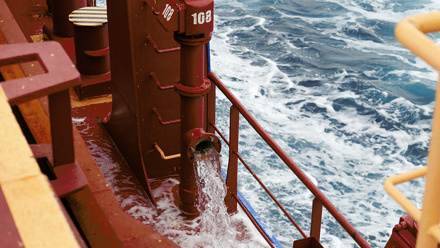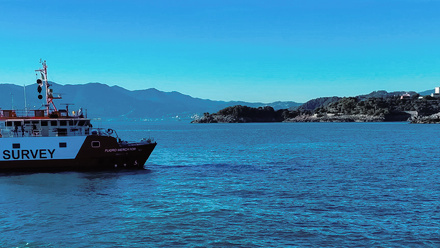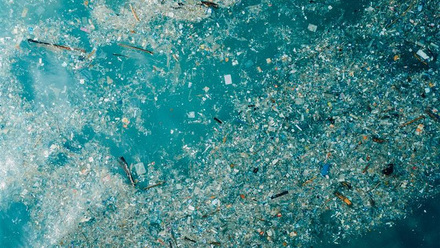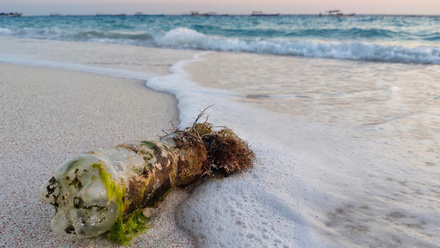Microplastics: the true danger to our oceans
Finely balanced marine ecosystems throughout the world are expected to come under increasing threat as growing consumerism alongside inadequate waste management measures is causing a dangerous build-up of ocean microplastics. But action to address this huge issue is underway.
Non-profit organisation The Ocean Cleanup – which is developing and scaling technologies to rid the oceans of plastic – estimates that about 0.5% of annual global plastic produced enters the sea, amounting to two million tonnes a year.
According to The Ocean Cleanup, most of this plastic is said to come from middle-income countries which are not properly managing the consequences of their economic growth, with rivers serving as the conduit from land to ocean, particularly during storms and heavy rain. Fishing and other seaborne activities are noted to be other contributors.
The organisation observes that microplastics – coming in primary form such as nurdles, cosmetic microbeads, textile fibres and tyre wear particles, and secondary form as larger plastics degrade – are already known to have travelled through the food chain to humans.
In addition to these as-yet-unknown long-term health effects, it notes that plastic pollution threatens the oxygen production and carbon suppression impacts of the ocean as well as the livelihoods of those who have an economic reliance on the ocean.
A spokesperson for The Ocean Cleanup concerningly expects the world’s plastic production to increase “substantially” in coming years.
“Unless there are better regulatory safeguards and waste management systems in place that reduce plastic waste and promote responsible disposal solutions, then ocean plastic pollution will continue to be a problem,” they said.
“However, there is also a growing interest in tackling this issue head on – we’ve seen firsthand how governments and communities are rallying to reduce plastic pollution and recover these critical ecosystems.”
‘Hard to comprehend’ scale of issue
Plastics expert consultant Dr Stephanie Lavelle said it is “hard to comprehend” the scale of the plastic pollution problem. “I find a biomass perspective helps,” she explained.
“The human biomass is about 290 million tonnes – every year we produce over 460 million tonnes of new plastic and over 350 million tonnes of plastic waste. These values are projected to triple in the coming two-to-three decades, with consumption patterns expected to grow predominantly in emerging economies – many have fringe key biodiversity areas but do not have adequate waste infrastructure to cope with today’s waste challenges.
“Ocean inputs vary by location, local activities and hydrography – but areas of high biodiversity are under pressure from a wide range of plastic-related impacts”.
Despite the United Nations (UN) Plastics Treaty failing to yet reach final agreement, Dr Lavelle sees room for positivity.
“They have failed to reach an agreement as of yet because of several key reasons – unlike other MEAs (multilateral environmental agreements), some member states insisted that the rules of procedure demand a unanimous agreement before they would even enter into discussions – an incredibly-high demand considering this is probably the most complex environmental MEA to be discussed.
“Further to this, member states tried to finalise an agreement within a record-breaking two years. For comparison, the BWM (Ballast Water Management) Convention took 20 years and was relatively straightforward.
“One of the key sticking points is member states are struggling to reach a compromise regarding the treaty taking a full lifecycle approach or just focusing on waste management and plastic pollution, which we all know will not address the issue.
“So, from my perspective, member states succeeded in not agreeing to a ‘weak’ treaty and the momentum for reducing plastic use, as well as improved waste management, towards a more circular use of resources is still very much in motion.
“There are even some discussions of an agreement outside the UN system for the majority of countries – who have strong ambitions – as well as many existing agreements and projects that will continue to support improving plastic use and management.”
A ‘lot of ambition’ to solve problem
“What is important to take away from this is that despite the results, there was a lot of ambition from civil society and countries on the frontlines of the crisis. The lack of a treaty does not mean a lack of action on the ground, and until there is a strong treaty in place, The Ocean Cleanup and our partners will continue to tackle the problem,” The Ocean Cleanup’s spokesperson stated.
“To quote our Global Public Affairs Team who were on the ground in Geneva during the latest global Plastics Treaty negotiations (INC5.2): ‘While the treaty may have stumbled, the global movement to tackle the plastic crisis has not lost momentum’.”
The spokesperson emphasised the “crucial” importance of collaboration to effectively fight plastic pollution.
“Our work wouldn’t be possible without our local partners with whom we work across our deployments in ten countries. There are also various projects and contributions which are endorsed by UNESCO which support global ocean science – one of which is ADIS (the Autonomous Debris Imaging System).
“It’s important to remember that ADIS relies on a long-term strategy. Currently, we are gradually scaling up the ADIS deployments with our partners.
“The data will be published on a world map similar to our mapbox map on our website. The data will also be published open-source and available to scientists and other key stakeholders. We envision that the data will allow us and others to map floating plastics on a scale never seen before and therefore contribute to future breakthroughs in clean-up efforts.”
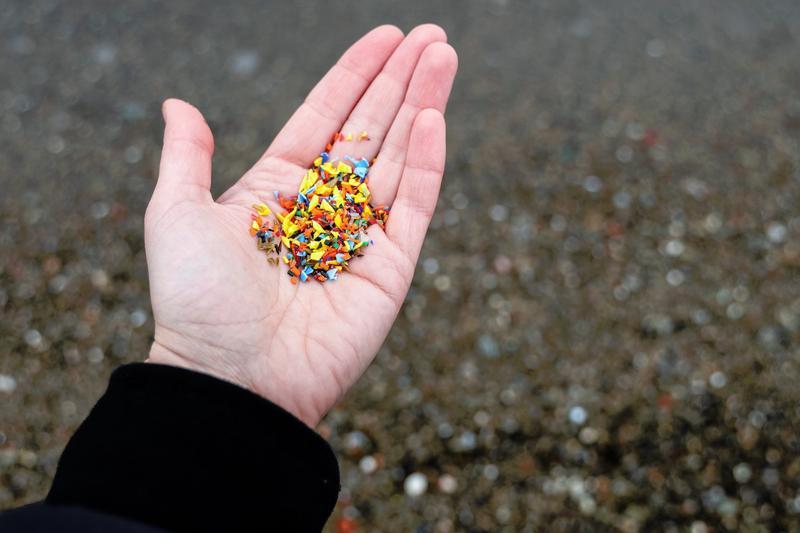
Greenwashing, waste management and the triple planetary crisis
Dr Lavelle is co-chair of IMarEST’s Ocean Plastics and Marine Litter (OPMLSIG) and says it held about a dozen roundtable discussions in the years since 2020. These were undertaken with various marine and maritime industries to “engage with stakeholders and build our capacity regarding sea-based sources of plastic pollution”.
“Each sector shared unique and common insights, one of the most prominent of which was regarding the use and management of drinking water onboard vessels. This is a significant source of SUP (single-use plastic) that have relatively-easy, land-based solutions – for example, reduce, refill and recycle. However, there is concern [of] transmission of infections onboard vessels that act as one of the barriers to reducing SUP.
“The challenges of international offshore and shoreside waste management and PRF (port reception facilities), management of fishing gear and ALDFG (abandoned, lost or otherwise discarded fishing gear), and the transport of plastic pellets, feedstocks, and additives were also some of the key issues reviewed during this process.”
According to Dr Lavelle, there are positive developments occurring in this sphere, but she also noted there is a “lot” of greenwashing – “especially around recycling and alternative materials, [and their] ability to be composted”.
“Despite many positive initiatives, this is such a large and complex issue that it has demanded a global treaty that dovetails in with the triple planetary crisis,” concluded Dr Lavelle.
Read more on this subject: Discarded fishing gear makes up 10% of marine litter.
Tell us what you think about this article by joining the discussion on IMarEST Connect.
Images: sea turtles swimming in ocean plastic debris, open palm filled with tiny microplastic particles. Credit (both): Shutterstock.



